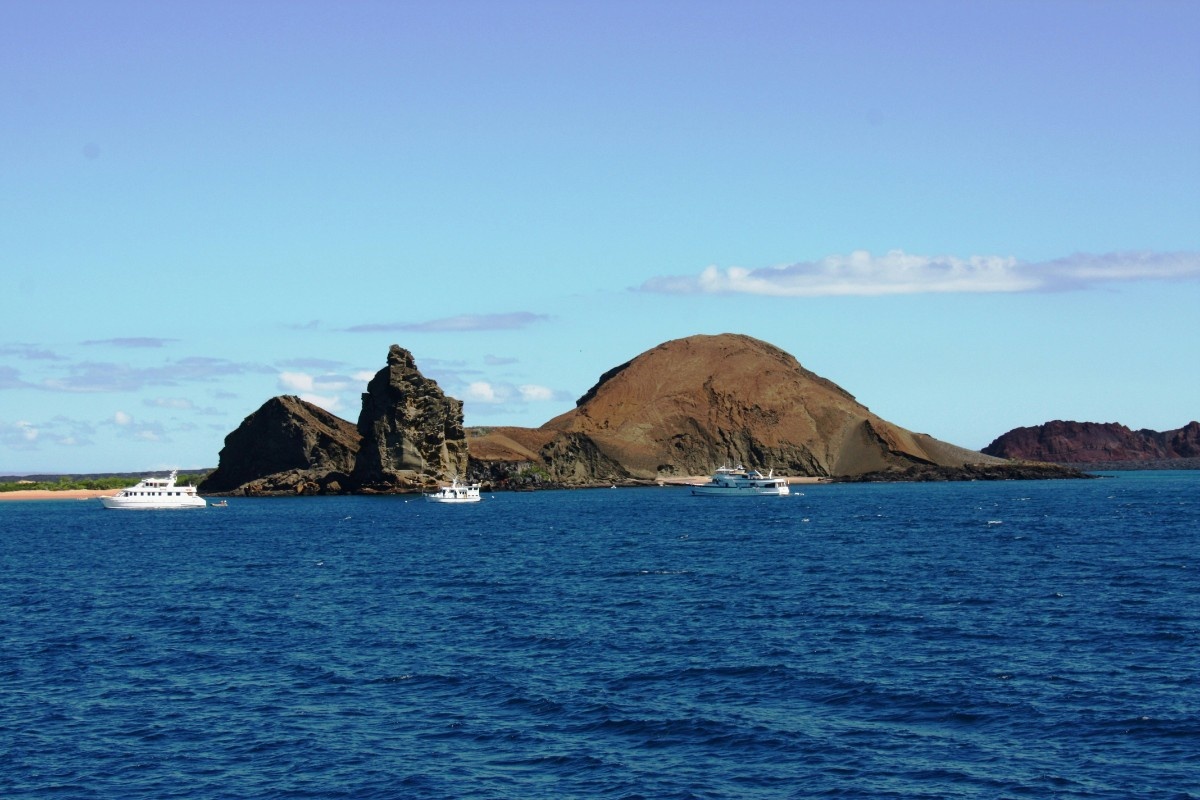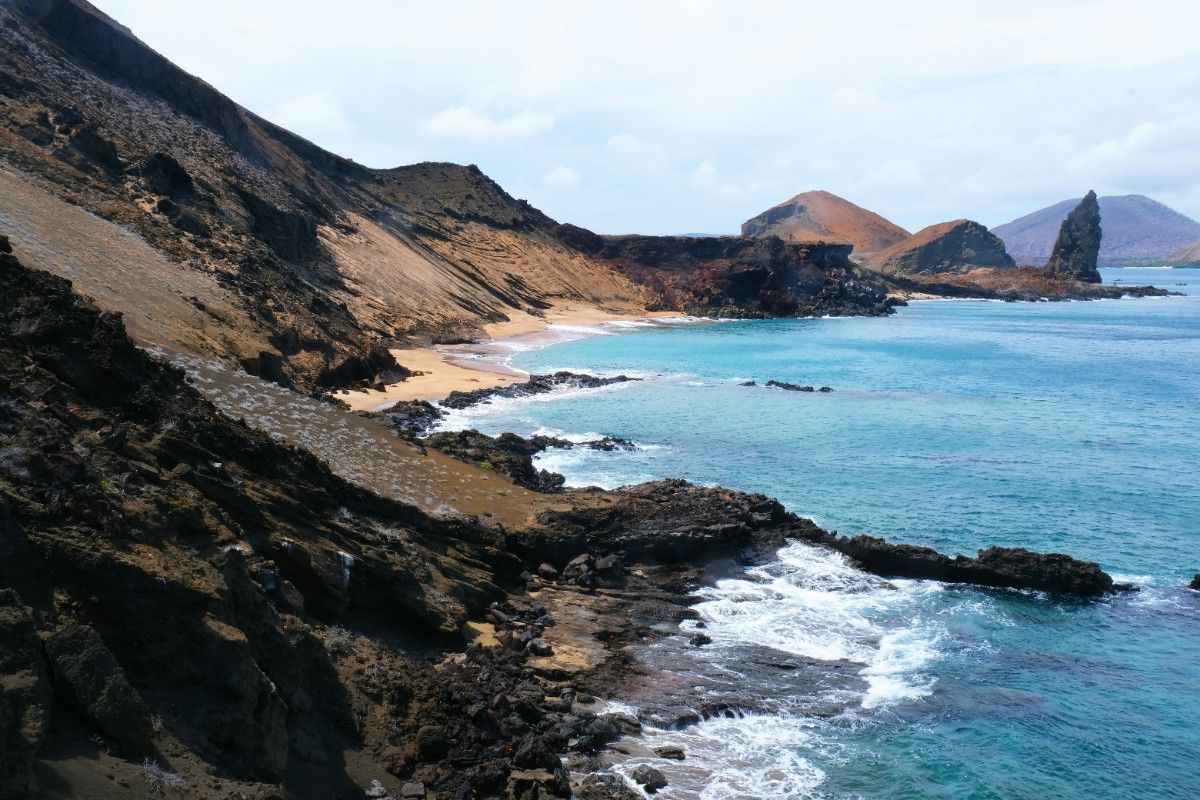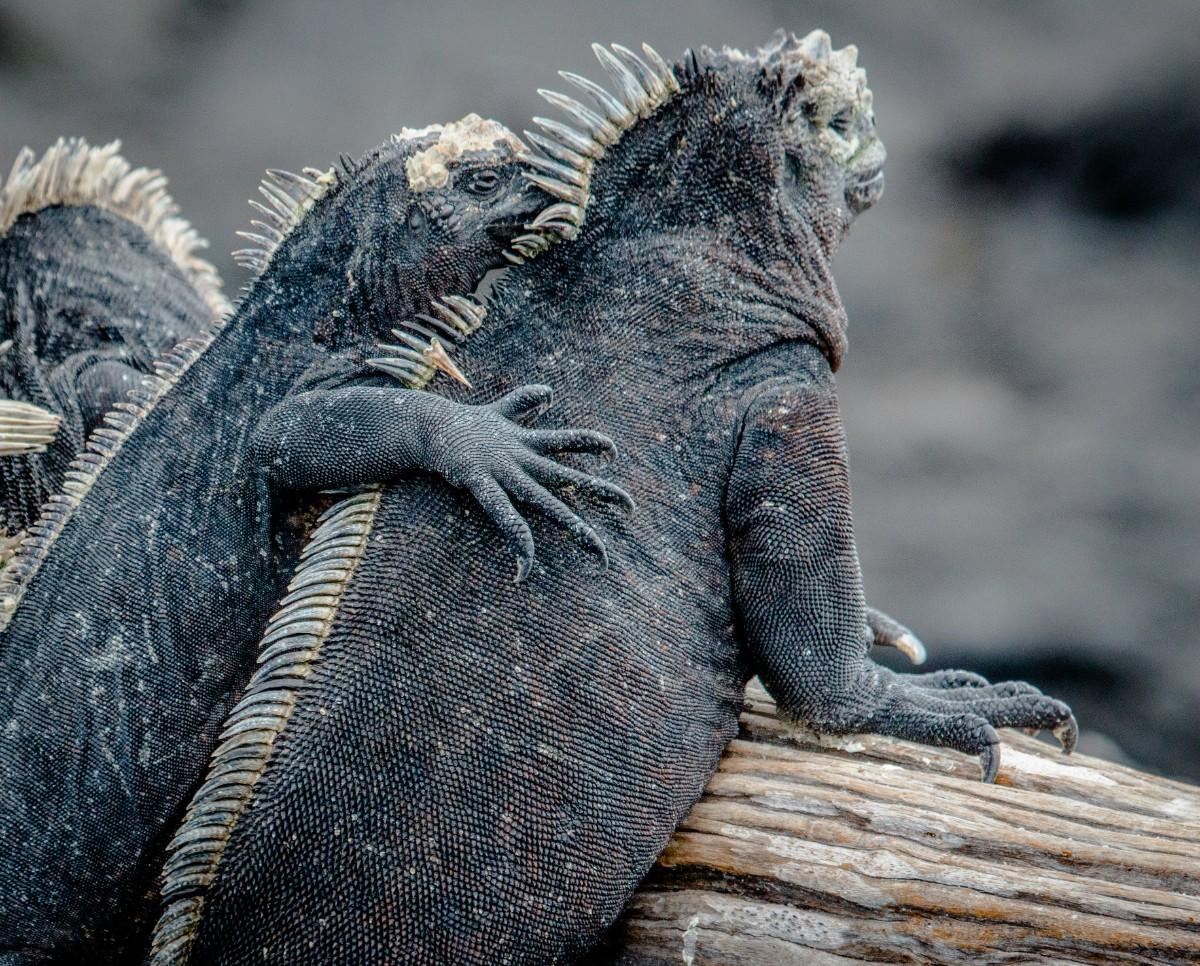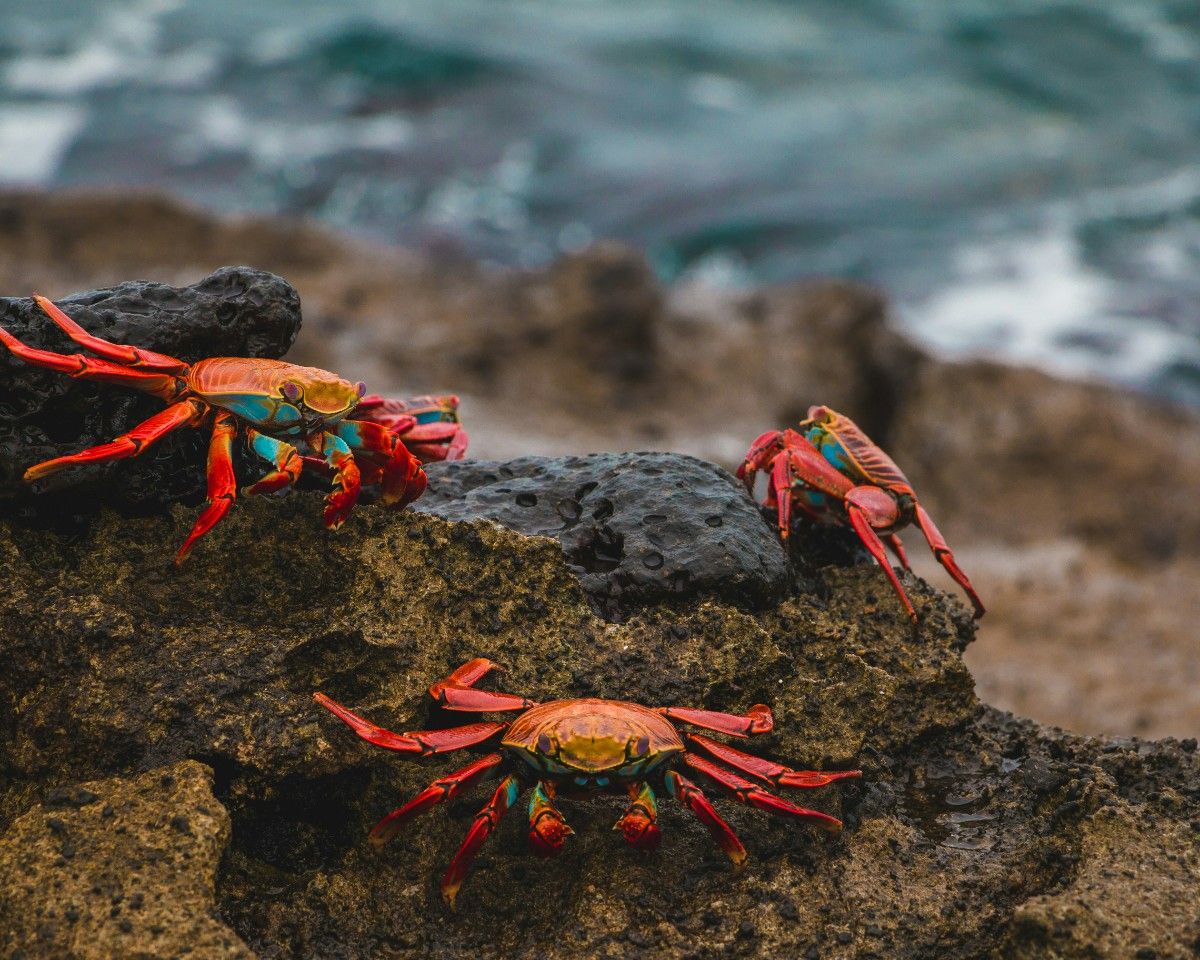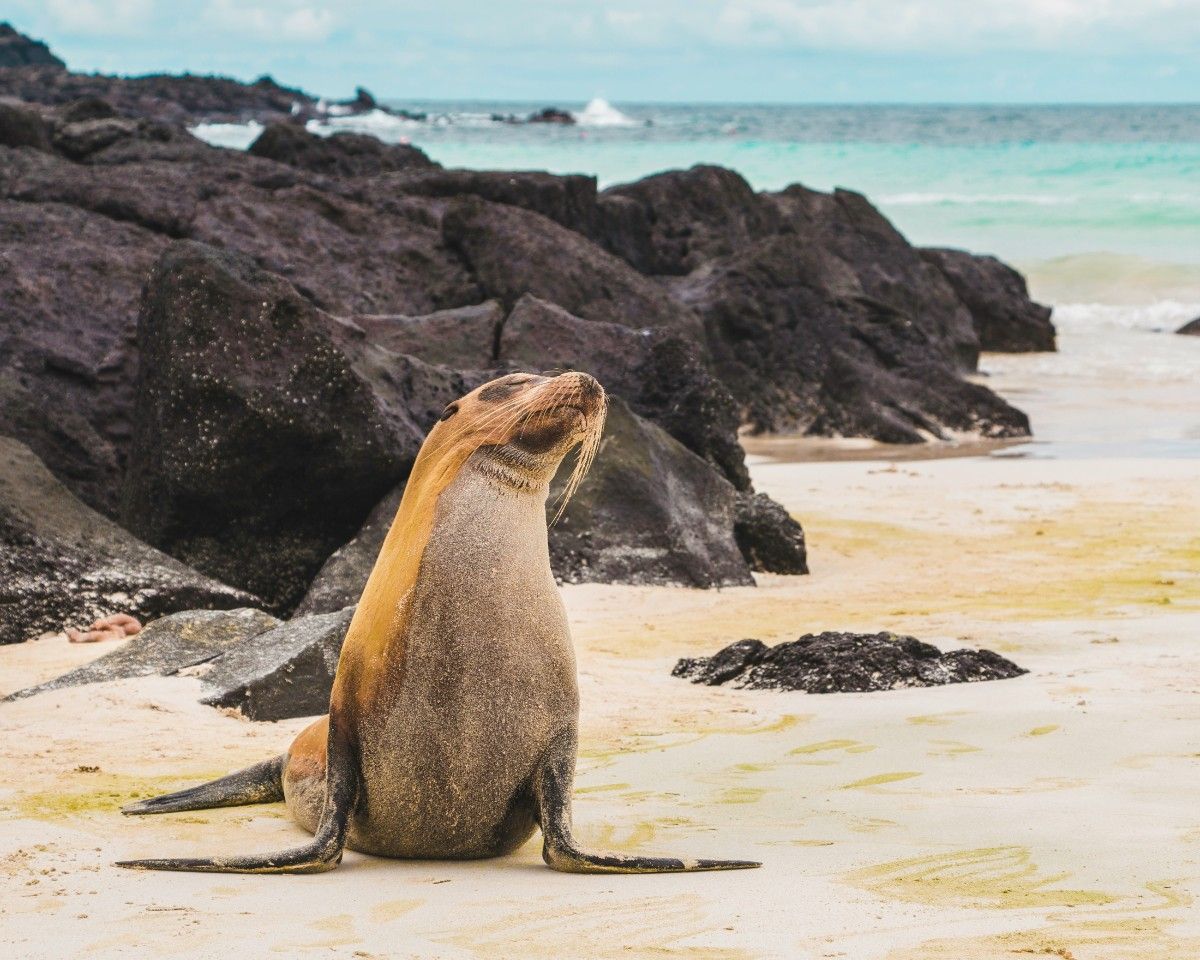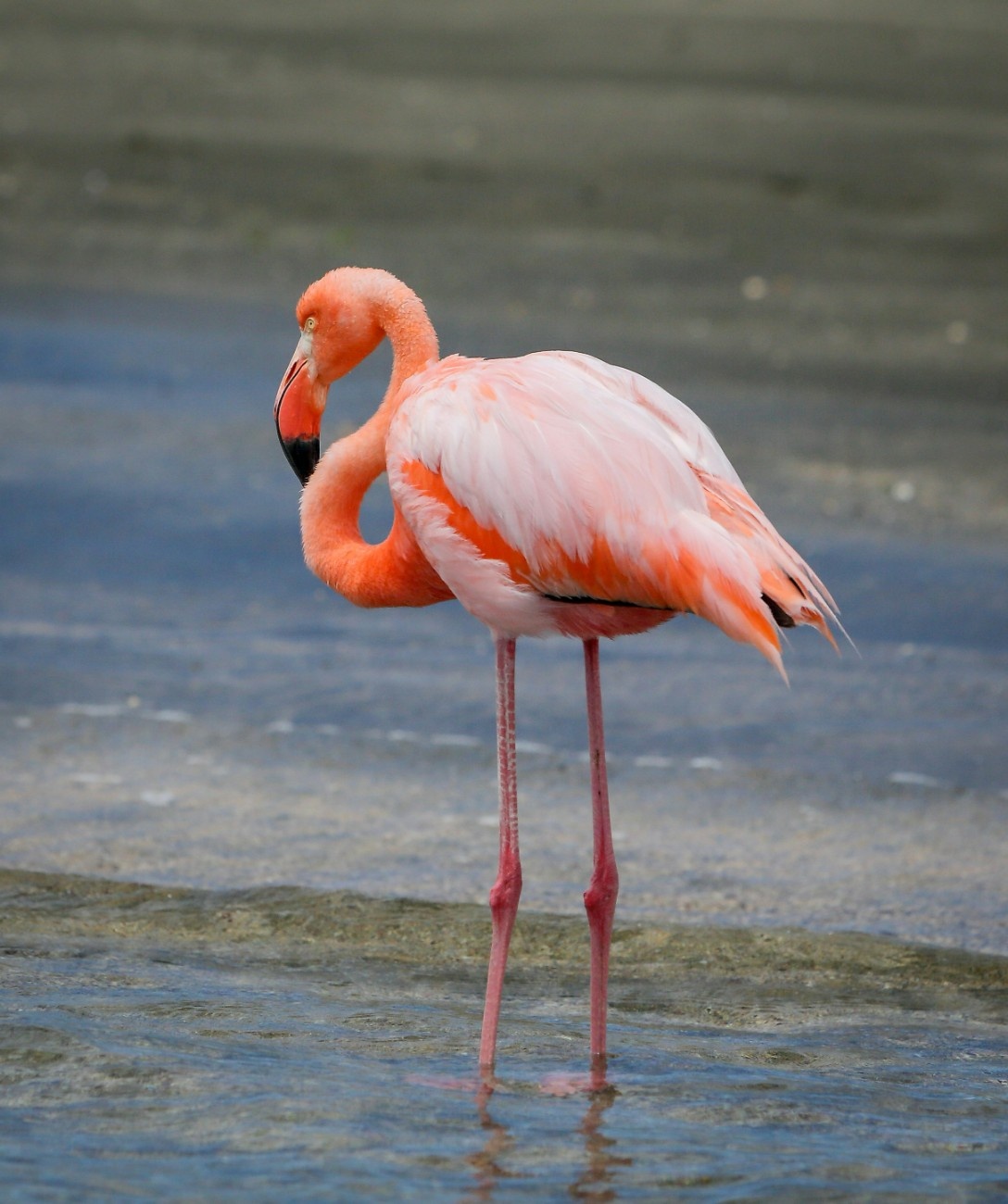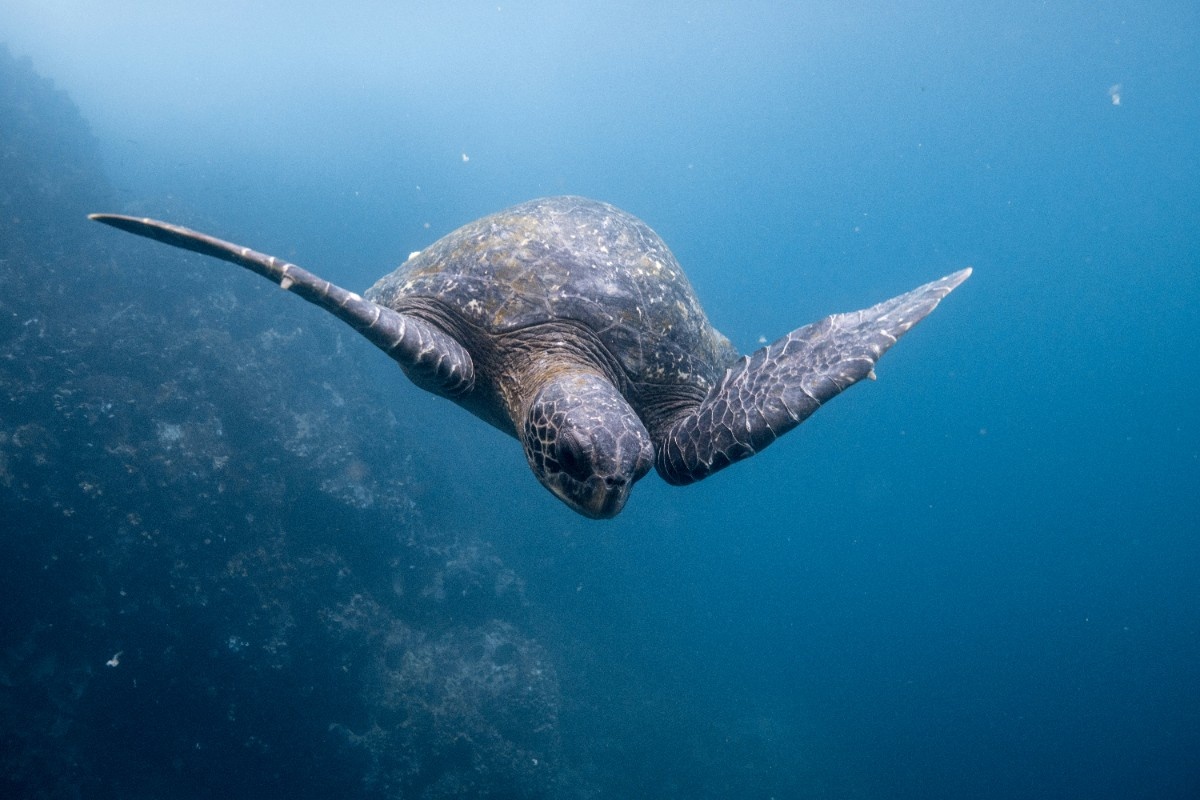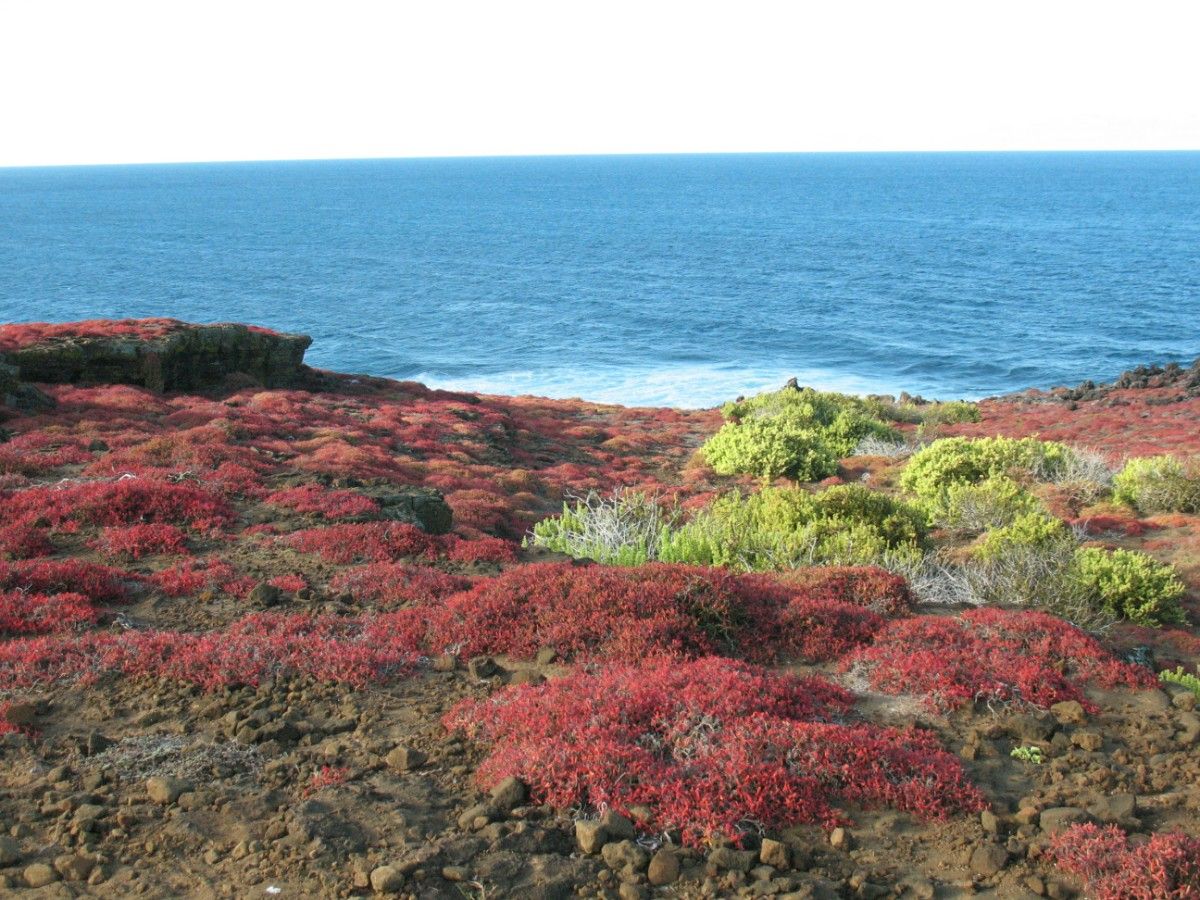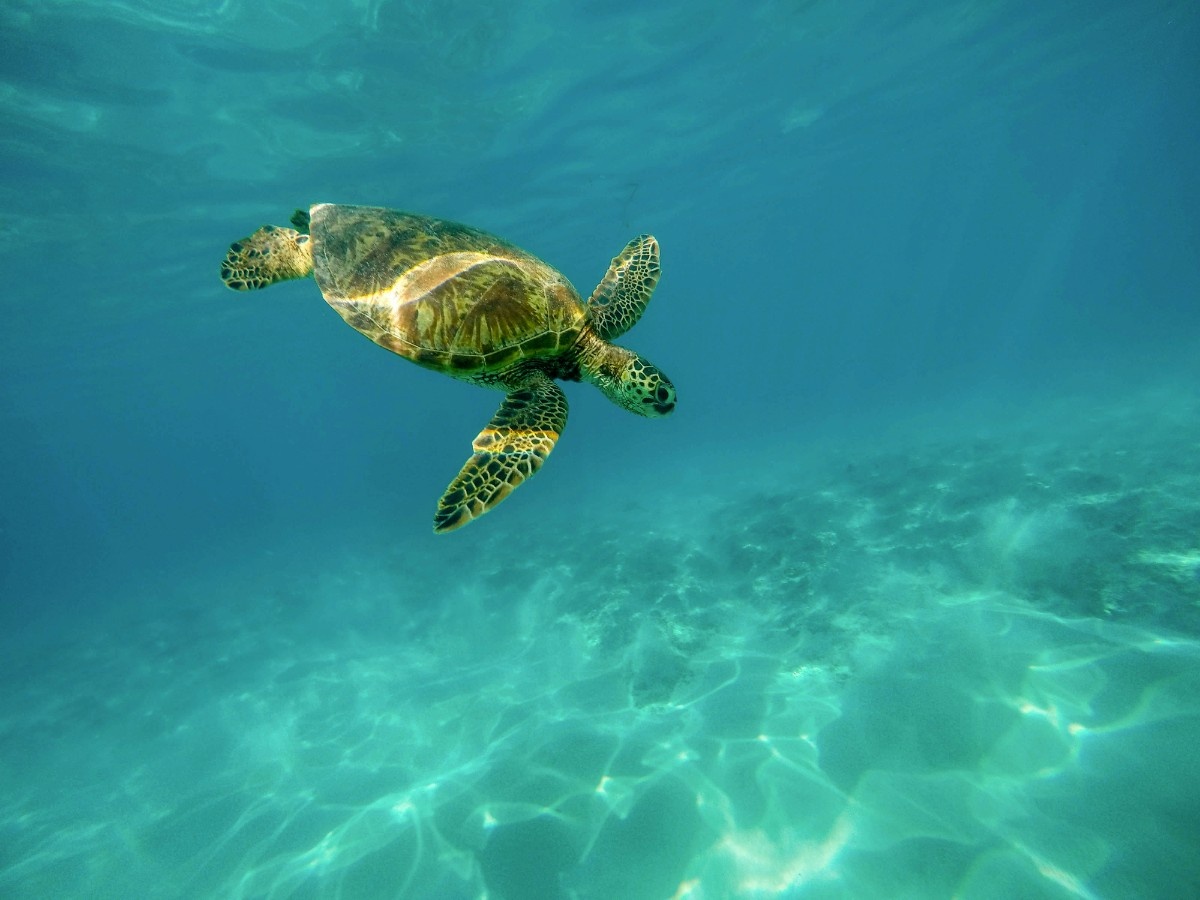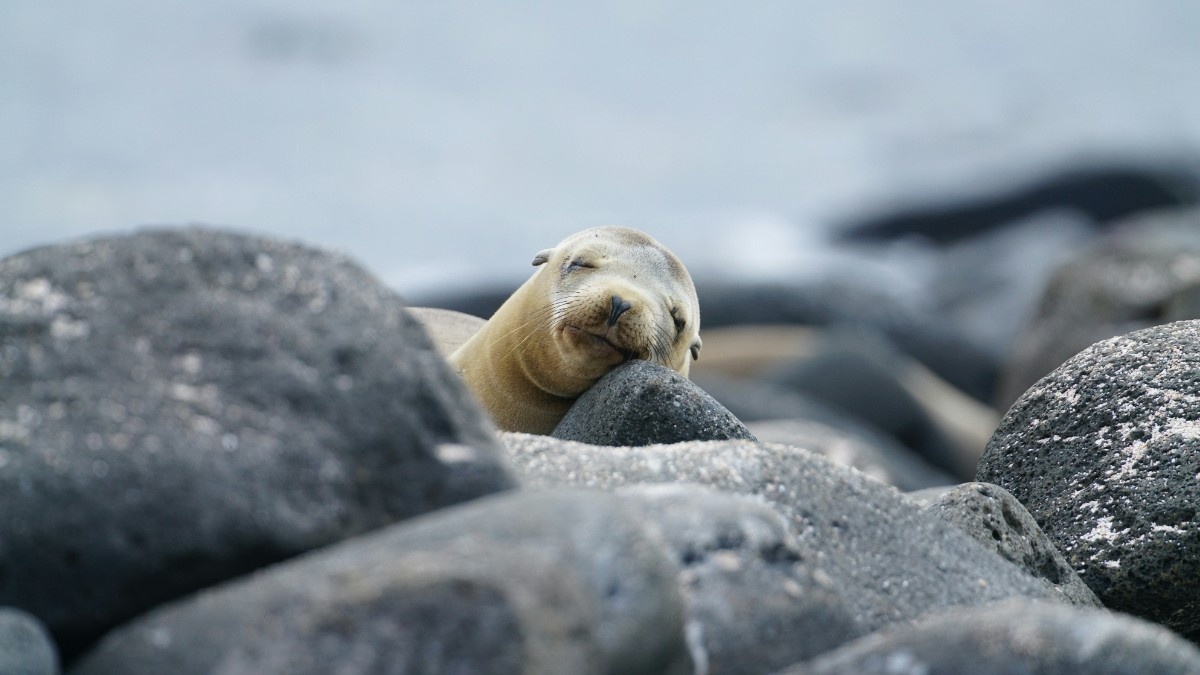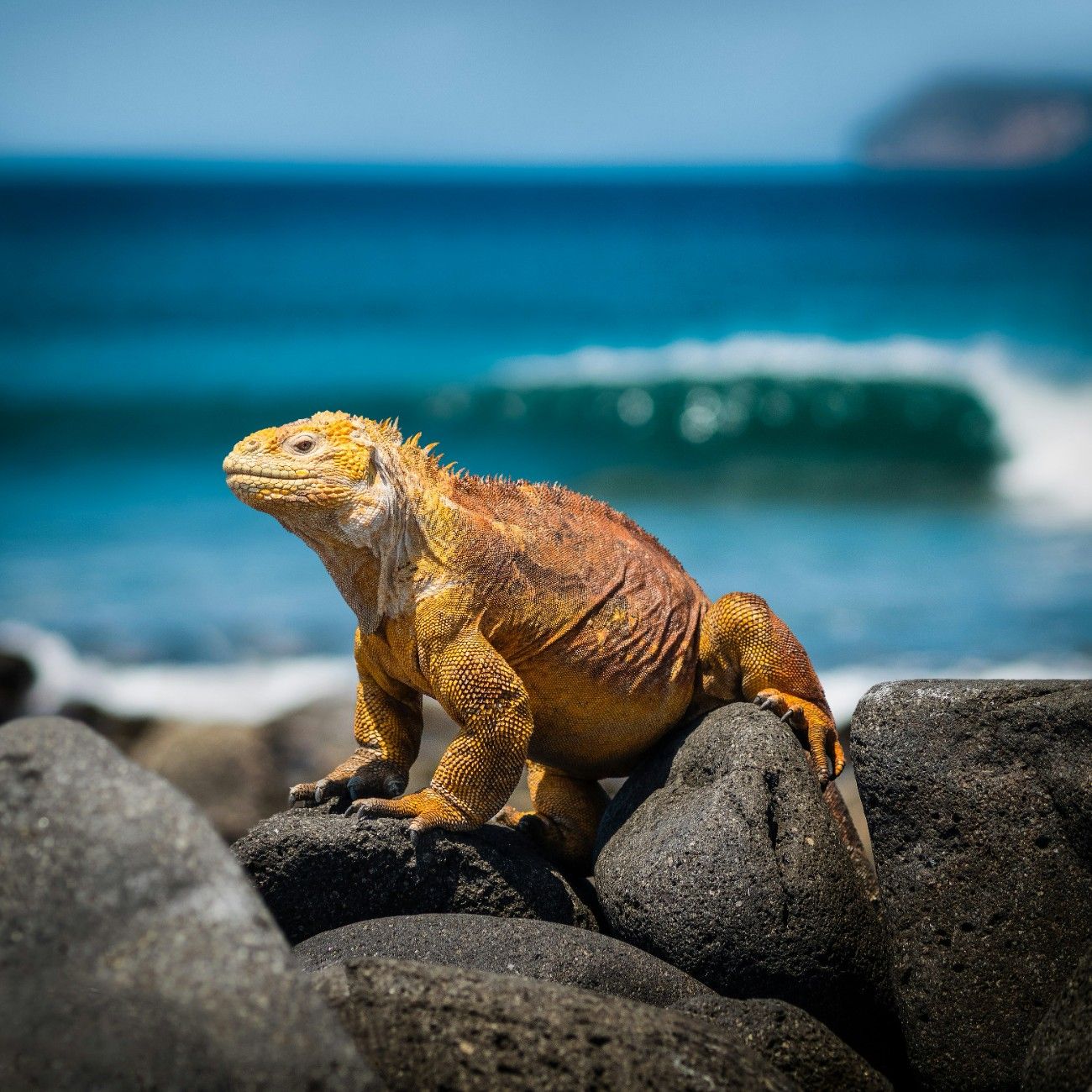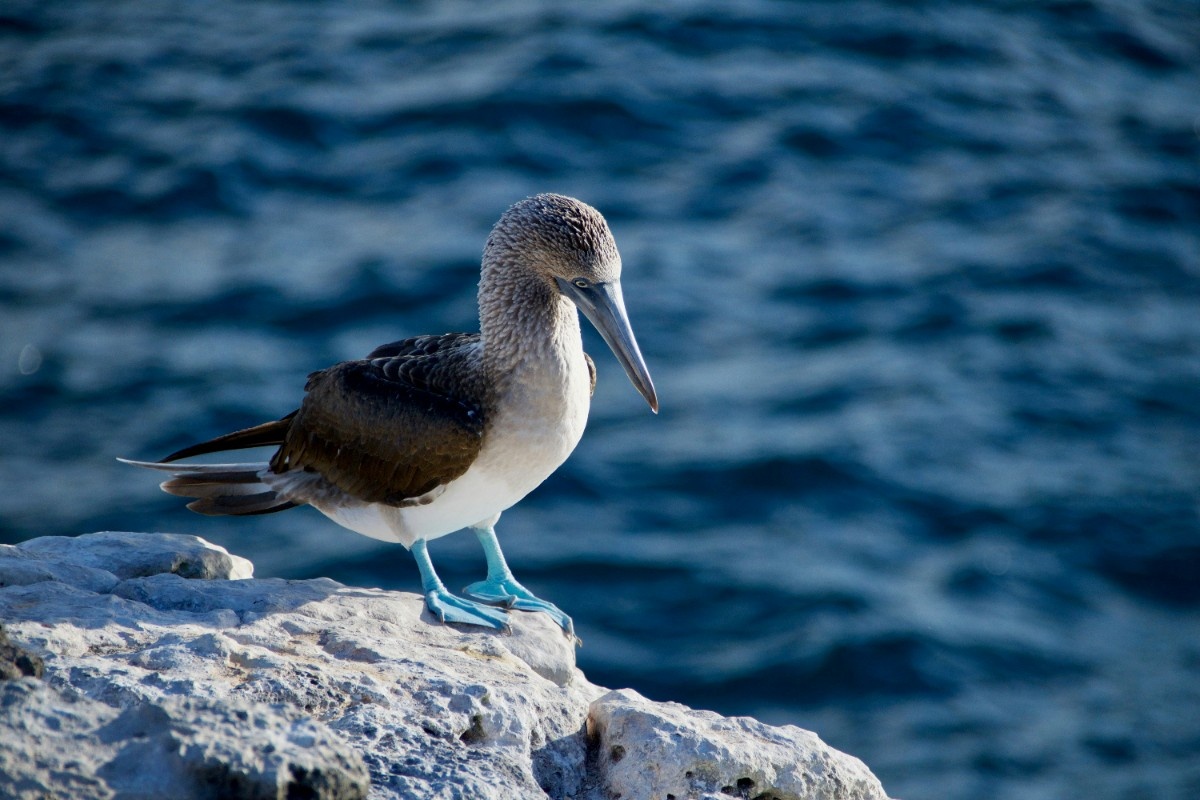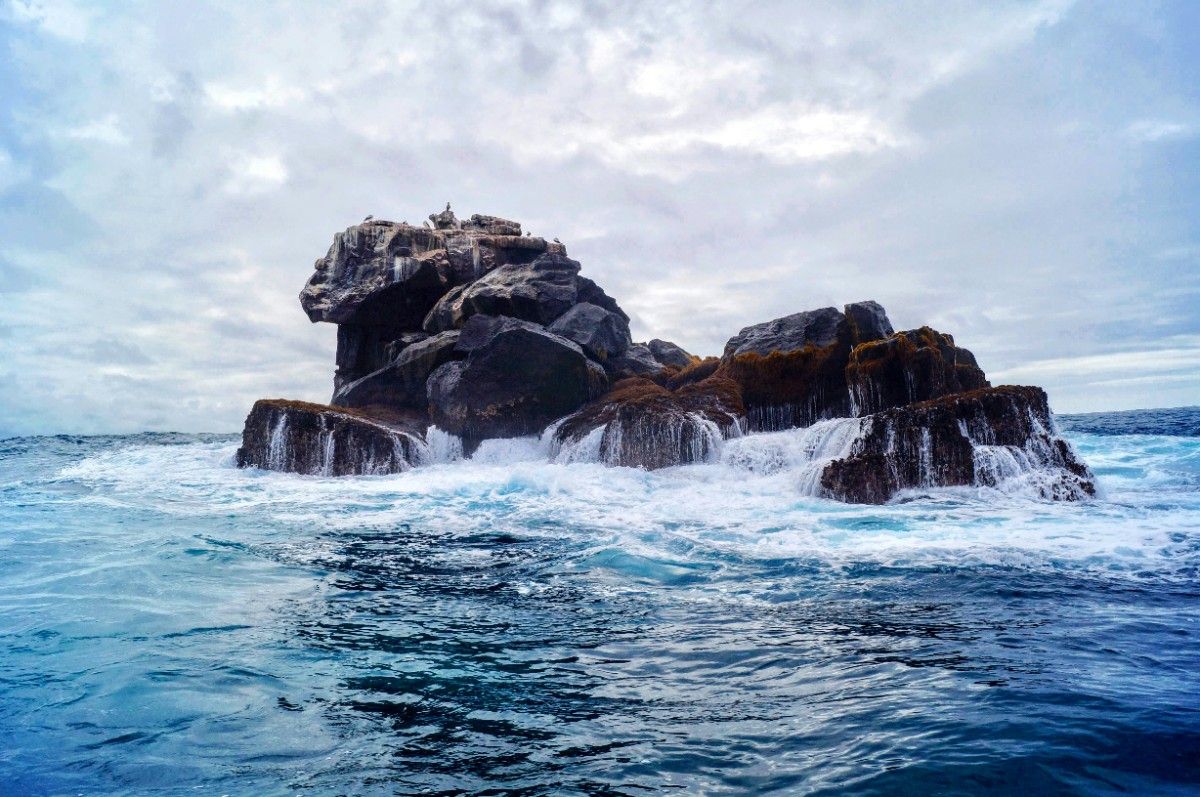Introduction to the Galapagos Islands
The Galapagos Islands, a breathtaking archipelago situated in the vast expanse of the Pacific Ocean, have captured the hearts and minds of adventurers, nature enthusiasts, and scientists alike. This volcanic wonderland, located approximately 600 miles off the coast of Ecuador, comprises 13 main islands and numerous smaller islets, each boasting its own unique charm and ecological significance. The Galapagos Islands are renowned for their extraordinary biodiversity, showcasing an array of endemic species that have evolved in isolation for millions of years.
A Living Laboratory of Evolution
The Galapagos Islands are often referred to as a living laboratory of evolution, and for good reason. These islands played a pivotal role in shaping Charles Darwin's groundbreaking theory of evolution by natural selection. During his voyage on the HMS Beagle in 1835, Darwin made remarkable observations of the islands' flora and fauna, particularly the finches, which exhibited a wide range of adaptations in their beak sizes and shapes. These observations laid the foundation for his revolutionary ideas, forever altering the course of scientific thought and our understanding of the natural world.
Unparalleled Biodiversity
One of the most striking features of the Galapagos Islands is their unparalleled biodiversity. The archipelago is home to an astonishing array of plant and animal life, many of which are found nowhere else on Earth. From the majestic Galapagos giant tortoises, which can live for over 150 years, to the playful sea lions and the enigmatic marine iguanas, the islands offer visitors an immersive experience in one of the world's most pristine and biodiverse ecosystems. The islands' unique flora, such as the Scalesia trees and the Galapagos tomato, have adapted to thrive in the harsh volcanic landscapes, showcasing the resilience and adaptability of life in the face of challenging environmental conditions.
A Haven for Scientific Research
The Galapagos Islands have long been a haven for scientific research, attracting scholars and researchers from around the world who seek to unravel the mysteries of evolution and ecology. The Charles Darwin Research Station, located on Santa Cruz Island, serves as a hub for scientific investigation, conservation efforts, and educational outreach. Researchers at the station work tirelessly to study the islands' unique ecosystems, monitor threatened species, and develop strategies for preserving this irreplaceable treasure for generations to come. The Galapagos Islands continue to provide invaluable insights into the workings of the natural world, reminding us of the importance of scientific inquiry in understanding and protecting our planet's biodiversity.
As we embark on a journey to explore the wonders of the Galapagos Islands, we are reminded of the profound impact these islands have had on our understanding of the natural world. From their geological formation and volcanic activity to their extraordinary flora and fauna, the Galapagos Islands offer a window into the intricate web of life that has evolved over millions of years. As we delve deeper into the secrets of this enchanting archipelago, we gain a greater appreciation for the importance of conservation and the role each of us can play in preserving this irreplaceable treasure for future generations.
Geological Formation and Volcanic Activity
The Galapagos Islands are a testament to the awe-inspiring power of geological forces, their very existence a result of the dynamic interplay between the Earth's crust and the fiery depths of its mantle. These islands, which emerged from the ocean floor through a series of volcanic eruptions, continue to be shaped and reshaped by the relentless activity of the Earth's interior. Understanding the geological formation and volcanic activity of the Galapagos Islands is crucial to appreciating the unique landscapes and ecosystems that have evolved in this remote corner of the world.
The Galapagos Hot Spot
The Galapagos Islands owe their existence to a fascinating geological phenomenon known as the Galapagos Hot Spot. This stationary mantle plume, located beneath the Nazca Plate, is the driving force behind the volcanic activity that has given rise to the archipelago. As the plate moves slowly eastward over the hot spot, magma from the Earth's mantle rises to the surface, creating new islands in a conveyor belt-like fashion. This process has resulted in a chain of islands that vary in age, with the youngest islands, Isabela and Fernandina, still being actively formed by volcanic eruptions, while the older islands, such as San Cristobal and Española, have had more time to develop their unique ecosystems.
Volcanic Landscapes and Geologic Wonders
The Galapagos Islands are a showcase of spectacular volcanic landscapes and geological wonders. From the towering shield volcanoes of Isabela Island, which rise over 5,000 feet above sea level, to the otherworldly lava fields of Santiago Island, the archipelago offers visitors a glimpse into the raw power and beauty of the Earth's geological processes. One of the most iconic geological features of the Galapagos Islands is the Sierra Negra Volcano, located on Isabela Island. This massive caldera, measuring over 6 miles across, is one of the largest in the world and is a testament to the immense forces that have shaped the islands over millions of years.
The Impact of Volcanic Activity on Ecosystems
The ongoing volcanic activity in the Galapagos Islands has a profound impact on the archipelago's ecosystems and the evolution of its resident species. The islands' volcanic origins have created a mosaic of habitats, from barren lava fields to lush highlands, each with its own unique set of environmental conditions. These varying landscapes have driven the adaptation and diversification of the islands' flora and fauna, resulting in the remarkable array of endemic species that have made the Galapagos famous. However, volcanic activity can also have devastating consequences for local wildlife populations, as eruptions can destroy habitats and alter the delicate balance of island ecosystems. Yet, in the aftermath of such disruptions, new opportunities for colonisation and adaptation arise, showcasing the incredible resilience of life in the face of adversity.
As we marvel at the geological wonders of the Galapagos Islands, we are reminded of the intricate relationship between the Earth's physical processes and the evolution of life. The islands' volcanic landscapes serve as a testament to the dynamic nature of our planet, and the ways in which geological forces can shape the course of biological evolution. By understanding the geological formation and volcanic activity of the Galapagos Islands, we gain a deeper appreciation for the complex interplay between the Earth's crust and the life that thrives upon it, and the importance of preserving these unique and fragile ecosystems for generations to come.
Unique Flora and Fauna
The Galapagos Islands are renowned for their extraordinary array of unique flora and fauna, showcasing the incredible power of evolution in action. These islands, isolated from the mainland for millions of years, have served as a natural laboratory for the development of highly specialised species, many of which are found nowhere else on Earth. From the iconic Galapagos giant tortoise to the striking Galapagos penguins, the archipelago's wildlife has captivated the hearts and minds of visitors and scientists alike.
Endemic Species: A Testament to Evolution
One of the most remarkable aspects of the Galapagos Islands' biodiversity is the high proportion of endemic species – those that are found exclusively within the archipelago. These species have evolved in isolation, adapting to the unique environmental conditions of each island and filling ecological niches that would otherwise be vacant. The islands' endemic species serve as a testament to the power of evolution, showcasing the ways in which natural selection can drive the diversification of life in response to varying environmental pressures.
Among the most iconic of the Galapagos' endemic species is the Galapagos giant tortoise. These majestic creatures, which can live for over 150 years and weigh up to 500 pounds, have adapted to the islands' arid conditions by developing the ability to store water in their bodies, allowing them to survive long periods without access to fresh water. The islands are home to several subspecies of giant tortoises, each with its own unique adaptations to the specific conditions of its island habitat.
Adaptive Radiation: The Galapagos Finches
Perhaps no group of animals on the Galapagos Islands better exemplifies the concept of adaptive radiation than the archipelago's finches. These small birds, made famous by Charles Darwin's observations during his voyage on the HMS Beagle, have evolved a remarkable diversity of beak shapes and sizes, each adapted to exploit a different food source. From the large, powerful beaks of the ground finches, which crack open tough seeds, to the slender, probing beaks of the cactus finches, which extract nectar and insects from flowers, the Galapagos finches showcase the incredible power of natural selection to drive specialisation and diversification.
The story of the Galapagos finches has become a classic example of evolution in action, illustrating how a single ancestral species can give rise to a wide range of adapted forms in response to varying environmental conditions. The finches' beaks, which have evolved to fill different ecological niches, serve as a powerful reminder of the ways in which even small changes in morphology can have profound consequences for an organism's ability to survive and reproduce.
Unique Plant Life: Adapting to Harsh Conditions
In addition to its remarkable wildlife, the Galapagos Islands are home to a fascinating array of unique plant life, adapted to thrive in the harsh, volcanic landscapes of the archipelago. From the moisture-trapping Scalesia trees to the Galapagos tomato, which has evolved resistance to the islands' toxic soils, the flora of the Galapagos showcases the incredible resilience and adaptability of life in the face of challenging environmental conditions.
One of the most striking examples of the Galapagos' unique plant life is the lava cactus, which grows directly on the islands' barren lava fields. These hardy plants have evolved a specialised root system that allows them to anchor themselves in the cracks and crevices of the volcanic rock, extracting moisture and nutrients from the scant soil that accumulates there. The lava cactus, like so many of the Galapagos' endemic species, serves as a testament to the power of evolution to shape life in even the most unforgiving of environments.
As we explore the unique flora and fauna of the Galapagos Islands, we are reminded of the incredible diversity and adaptability of life on Earth. The islands' endemic species, shaped by millions of years of isolation and natural selection, offer a window into the evolutionary processes that have given rise to the stunning variety of life we see around us. By studying and preserving these irreplaceable ecosystems, we gain a deeper appreciation for the importance of biodiversity and the role each of us can play in ensuring its survival for generations to come.
Charles Darwin and the Theory of Evolution
The Galapagos Islands will forever be inextricably linked to the groundbreaking work of Charles Darwin and his development of the theory of evolution by natural selection. Darwin's visit to the archipelago in 1835, as part of his voyage on the HMS Beagle, proved to be a turning point in the history of science, setting the stage for a revolutionary new understanding of the natural world and the processes that shape it.
Darwin's Voyage and Observations
During his five-week stay on the Galapagos Islands, Darwin was struck by the remarkable diversity and uniqueness of the islands' flora and fauna. He observed that many of the species found on the islands, such as the Galapagos finches and the Galapagos giant tortoises, were similar to those found on the mainland, yet exhibited distinct differences in their morphology and behaviour. Darwin meticulously collected specimens and made detailed notes on the variations he observed, laying the foundation for his later work on the theory of evolution.
One of Darwin's most significant observations concerned the Galapagos finches. He noticed that the beaks of these birds varied significantly from island to island, with each population adapted to exploit different food sources. This observation led Darwin to hypothesise that the finches had evolved from a common ancestor, with their beaks gradually changing over time to better suit their specific ecological niches. This insight would later prove crucial to the development of his theory of evolution by natural selection.
The Theory of Evolution by Natural Selection
Upon his return to England, Darwin began to synthesise his observations from the Galapagos Islands and elsewhere, developing his groundbreaking theory of evolution by natural selection. According to this theory, organisms with traits that are advantageous for survival and reproduction are more likely to pass these traits on to their offspring, leading to the gradual accumulation of adaptations over many generations.
Darwin's theory challenged the prevailing view of the time, which held that species were immutable and had been created in their present form by a divine creator. Instead, he proposed a mechanism by which species could change and diversify over time, driven by the pressures of their environment and competition for resources. This revolutionary idea would forever change the way we understand the natural world and our place within it.
The Galapagos Islands: A Living Laboratory of Evolution
The Galapagos Islands continue to serve as a living laboratory for the study of evolution, attracting scientists from around the world who seek to deepen our understanding of the processes that shape the diversity of life on Earth. The islands' unique ecosystems, shaped by millions of years of isolation and adaptation, provide an unparalleled opportunity to observe evolution in action, from the ongoing diversification of the Galapagos finches to the development of new species in response to changing environmental conditions.
The Charles Darwin Research Station, located on Santa Cruz Island, serves as a hub for scientific research and conservation efforts in the Galapagos. Here, scientists work to study the islands' unique flora and fauna, monitor the health of endangered populations, and develop strategies for preserving these irreplaceable ecosystems for generations to come. The station also serves as an important educational resource, providing visitors with insights into the history of the Galapagos Islands and the groundbreaking scientific discoveries that have emerged from this remarkable corner of the world.
As we reflect on the profound impact of Charles Darwin's work and the enduring significance of the Galapagos Islands, we are reminded of the power of scientific inquiry to illuminate the mysteries of the natural world. By studying the processes that have shaped life on these remote islands, we gain a deeper appreciation for the incredible complexity and beauty of the world around us, and the importance of preserving these irreplaceable treasures for future generations.
Conservation Efforts and Challenges
The Galapagos Islands are not only a beacon of evolutionary wonder but also a poignant reminder of the urgent need for conservation in the face of mounting human impacts and climate change. As tourism to the islands has surged in recent decades, so too have the pressures on their delicate ecosystems, from the introduction of invasive species to the strain on limited resources like fresh water. Protecting the unique biodiversity of the Galapagos Islands requires a concerted effort from local authorities, conservation organisations, and visitors alike.
Combating Invasive Species
One of the most significant threats to the native flora and fauna of the Galapagos Islands is the introduction of invasive species. These non-native plants and animals, often brought to the islands inadvertently by human activity, can quickly spread and outcompete endemic species, disrupting the delicate balance of island ecosystems. Invasive plants like blackberry and guava can overrun native vegetation, while introduced predators such as rats and feral cats prey on vulnerable endemic species, particularly the islands' unique birds and reptiles.
To address this pressing issue, the Galapagos National Park, in collaboration with various conservation organisations, has implemented a multi-faceted approach to invasive species management. This includes strict biosecurity measures to prevent the introduction of new non-native species, as well as targeted eradication programs to remove existing invasive populations. One notable success story is the eradication of goats from several islands in the archipelago, which had been decimating native plant communities and altering the islands' landscapes.
Mitigating the Impacts of Climate Change
Climate change poses another significant challenge to the conservation of the Galapagos Islands. As global temperatures continue to rise, the islands are experiencing increasingly frequent and severe El Niño events, which can bring heavy rainfall, flooding, and other disruptions to local ecosystems. These changes can have cascading effects on the islands' unique species, many of which are highly specialised and adapted to specific environmental conditions.
To build resilience in the face of climate change, conservation efforts in the Galapagos Islands are increasingly focused on proactive measures such as habitat restoration, the establishment of protected areas, and the monitoring of vulnerable populations. By working to maintain and enhance the health and diversity of island ecosystems, conservationists hope to give endemic species the best possible chance of adapting to changing conditions and persisting into the future.
Promoting Sustainable Tourism
Tourism is both a vital economic driver and a potential source of stress for the Galapagos Islands. While visitor revenue provides crucial support for conservation efforts, unchecked tourism growth can put unsustainable pressure on the islands' limited resources and fragile ecosystems. Striking a balance between economic development and environmental protection is thus a key challenge for the Galapagos.
To promote sustainable tourism, the Galapagos National Park has implemented a range of measures, from limiting visitor numbers and regulating access to sensitive areas, to promoting eco-friendly practices such as the use of renewable energy and the reduction of waste. By engaging visitors in conservation education and encouraging responsible behavior, the park aims to foster a culture of stewardship and respect for the islands' unique natural heritage.
As we grapple with the conservation challenges facing the Galapagos Islands, it is clear that protecting these irreplaceable ecosystems will require ongoing collaboration, innovation, and commitment from all stakeholders. By working together to address the complex interplay of human activities and environmental pressures, we can help ensure that the Galapagos remain a bastion of biodiversity and a source of inspiration for generations to come.
Marine Life and Aquatic Adventures
Beyond their terrestrial wonders, the Galapagos Islands are also renowned for the incredible diversity and abundance of marine life that thrives in the surrounding waters. Fed by the convergence of cold and warm ocean currents, the archipelago's coastal ecosystems are home to an astonishing array of aquatic species, from colourful reef fish and playful sea lions to enigmatic sharks and majestic whales. For visitors to the islands, exploring this underwater realm offers a chance to experience the Galapagos' natural riches from a whole new perspective.
Snorkelling and Diving in the Galapagos
Snorkelling and diving are among the most popular and immersive ways to discover the Galapagos Islands' vibrant marine world. The archipelago's clear, nutrient-rich waters support an incredible diversity of life, with each site offering its own unique combination of species and submarine landscapes. At Kicker Rock off San Cristobal Island, for example, swimmers can explore a dramatic volcanic formation rising from the depths, its submerged cliffs and caves home to an array of colourful fish, sea turtles, and Galapagos sharks.
Other top snorkelling and diving spots in the Galapagos include the shallow reefs off Bartolome Island, where penguins and sea lions often join swimmers for a playful underwater frolic, and the remote northern islands of Darwin and Wolf, famed for their large schools of hammerhead sharks and other pelagic species. Regardless of location, every aquatic adventure in the Galapagos is an opportunity to witness the islands' stunning marine biodiversity firsthand and gain a deeper appreciation for the interconnectedness of life above and below the waves.
Iconic Marine Species of the Galapagos
From the world's only seagoing lizard to the tropical penguins that call the islands home, the Galapagos Islands are a showcase of evolutionary marvels and ecological adaptations. Perhaps no species better embodies the islands' unique marine life than the Galapagos marine iguana. Found nowhere else on Earth, these prehistoric-looking reptiles have evolved specialised adaptations for foraging in the sea, including a flattened tail for swimming and sharp claws for clinging to rocks in the crashing surf.
Other iconic marine species of the Galapagos include the Galapagos penguin, the only penguin species found north of the equator, and the Galapagos fur seal, a small, endemic otariid known for its playful antics and endearing appearance. Offshore, the archipelago's waters are a haven for a wide variety of shark species, from the diminutive whitetip reef shark to the oceanic behemoths like whale sharks and hammerheads that visit the islands to feed and breed.
Conservation and Ecotourism in the Galapagos Marine Reserve
Recognising the global significance of the Galapagos Islands' marine ecosystems, the government of Ecuador established the Galapagos Marine Reserve in 1998. Encompassing over 50,000 square miles of ocean surrounding the archipelago, the reserve is one of the largest and most biodiverse marine protected areas in the world, home to an estimated 2,900 marine species, many of which are found nowhere else on Earth.
The Galapagos Marine Reserve is not only a vital safeguard for the islands' incredible aquatic biodiversity but also a model for sustainable ecotourism and community-based conservation. By working closely with local stakeholders, including artisanal fishing communities and tour operators, the reserve aims to balance the protection of critical marine habitats with the responsible use of ocean resources. Visitors to the Galapagos can support these efforts by choosing eco-friendly tour operators, respecting park regulations, and engaging in responsible aquatic activities that minimise their impact on the islands' delicate marine ecosystems.
As we explore the Galapagos Islands' rich tapestry of marine life and embark on aquatic adventures in this one-of-a-kind destination, we are reminded of the vital importance of conserving and stewarding these precious underwater worlds. Through responsible ecotourism, scientific research, and community engagement, we can all play a role in ensuring that the Galapagos' marine wonders continue to thrive for generations to come.
Visitor Experience and Sustainable Tourism
Visiting the Galapagos Islands is a transformative experience that offers travellers the opportunity to immerse themselves in one of the world's most unique and captivating natural environments. From encountering endemic species found nowhere else on Earth to witnessing the awe-inspiring landscapes shaped by the islands' volcanic origins, a trip to the Galapagos is an unforgettable adventure that leaves a lasting impact on all who embark upon it. However, as tourism to the islands continues to grow, it is increasingly important that visitors prioritise sustainability and responsible travel practices to ensure the long-term health and viability of this irreplaceable ecosystem.
Exploring the Galapagos: Tours and Activities
There are many ways to experience the wonders of the Galapagos Islands, each offering its own unique blend of adventure, education, and immersion in the natural world. One of the most popular options is a guided tour, which can range from single-day excursions to multi-day cruises around the archipelago. These tours are led by knowledgeable naturalist guides who provide insight into the islands' ecology, evolutionary history, and conservation challenges, while ensuring that visitors follow park regulations and minimise their impact on the environment.
For those seeking a more intimate and personalised experience, land-based tours and activities offer the chance to explore the Galapagos at a slower pace and in greater depth. From hiking and birdwatching in the islands' lush highlands to kayaking and snorkelling along the pristine coastline, there are endless opportunities to discover the archipelago's diverse landscapes and wildlife. Visitors can also engage with local communities and support sustainable development initiatives, such as eco-friendly accommodations and artisanal crafts.
Sustainable Tourism Practices
As the Galapagos Islands face mounting pressures from tourism growth and global environmental change, it is crucial that visitors prioritise sustainability and responsible travel practices. This means not only following park regulations and minimising one's ecological footprint but also actively supporting conservation efforts and local communities through informed choices and actions.
One key aspect of sustainable tourism in the Galapagos is choosing eco-friendly accommodations and tour operators that prioritise environmental stewardship and social responsibility. Many lodges and cruises in the islands have implemented green practices such as renewable energy use, water conservation, and waste reduction, while also supporting local employment and community development initiatives. By opting for these sustainable options, visitors can help ensure that their travel dollars contribute to the long-term well-being of the Galapagos and its inhabitants.
Visitor Education and Awareness
Ultimately, the success of sustainable tourism in the Galapagos Islands depends on the active engagement and awareness of visitors themselves. By learning about the islands' unique ecology, evolutionary history, and conservation challenges, travellers can gain a deeper appreciation for the importance of preserving this global treasure and become advocates for its protection.
The Galapagos National Park and other conservation organisations offer a range of educational resources and programs for visitors, from interpretive exhibits and guided walks to hands-on citizen science initiatives. By participating in these activities and sharing their experiences with others, visitors can help spread awareness about the Galapagos and inspire wider support for its conservation.
As we reflect on the visitor experience and sustainable tourism practices in the Galapagos Islands, we are reminded of the profound responsibility we all share as global citizens to safeguard the world's most precious and irreplaceable ecosystems. By embracing sustainable travel practices, supporting local conservation efforts, and educating ourselves and others about the wonders and challenges of the Galapagos, we can all play a part in ensuring that this extraordinary archipelago continues to inspire and enlighten generations to come.
Final Thoughts and Reflections
As we come to the end of our journey through the Galapagos Islands, it is impossible not to feel a sense of awe and reverence for the incredible natural wonders we have encountered along the way. From the islands' volcanic landscapes and endemic species to the groundbreaking scientific discoveries and conservation challenges they have inspired, the Galapagos are a testament to the power and resilience of nature, as well as the ingenuity and responsibility of humankind.
A Symbol of Evolutionary Wonder
At their core, the Galapagos Islands are a living laboratory of evolution, a place where the forces of natural selection and adaptation have played out over millions of years to create a tapestry of unique and fascinating lifeforms. From the Galapagos finches that inspired Charles Darwin's theory of evolution to the marine iguanas and giant tortoises that have become icons of the archipelago, the species of the Galapagos are a testament to the incredible diversity and adaptability of life on Earth.
By studying and preserving these species and the ecosystems they inhabit, we gain not only a deeper understanding of the natural world but also a sense of humility and perspective on our own place within it. The Galapagos remind us that we are but one species among many, all interconnected and dependent on the health and vitality of the planet we share.
A Call to Action for Conservation
At the same time, the Galapagos Islands are also a stark reminder of the challenges and threats facing our planet's biodiversity in the face of human impacts and global environmental change. From invasive species and unsustainable tourism to climate change and ocean acidification, the pressures on the Galapagos' delicate ecosystems are many and complex, requiring urgent and coordinated action from all stakeholders.
As visitors, scientists, and global citizens, we all have a role to play in supporting the conservation of the Galapagos Islands and the countless other precious and threatened ecosystems around the world. This means not only adopting sustainable practices in our own lives and travels but also advocating for stronger environmental policies, supporting conservation organisations, and educating others about the importance of preserving our planet's natural heritage.
A Source of Hope and Inspiration
Ultimately, the Galapagos Islands are a source of hope and inspiration, a reminder of the incredible beauty and resilience of the natural world, as well as the power of human curiosity, ingenuity, and compassion to understand and protect it. From the groundbreaking scientific discoveries of Charles Darwin to the tireless efforts of conservationists and local communities today, the Galapagos have long been a catalyst for positive change and a beacon of hope for the future of our planet.
As we reflect on our journey through this extraordinary archipelago, let us carry forward the lessons and inspirations we have gained, and commit ourselves to being stewards and advocates for the natural world in all its wondrous diversity. Let us strive to live up to the example set by the Galapagos Islands, to be more curious and compassionate, more humble and responsible, and more deeply connected to the web of life that sustains us all.
For in the end, the story of the Galapagos Islands is not just a story of a remote and fascinating archipelago, but a story of our shared planet and our shared future. It is a story of the incredible power and fragility of nature, and of the equally incredible power and responsibility of humankind to cherish and protect it. May we rise to this challenge, and may the Galapagos continue to inspire and guide us on this journey, now and for generations to come.
Related Articles

Let us know you agree to cookies
We use marketing, analytical and functional cookies as well as similar technologies to give you the best experience. Third parties, including social media platforms, often place tracking cookies on our site to show you personalised adverts outside of our website.
We store your cookie preferences for two years and you can edit your preferences via ‘manage cookies’ or through the cookie policy at the bottom of every page. For more information, please see our cookie policy.
